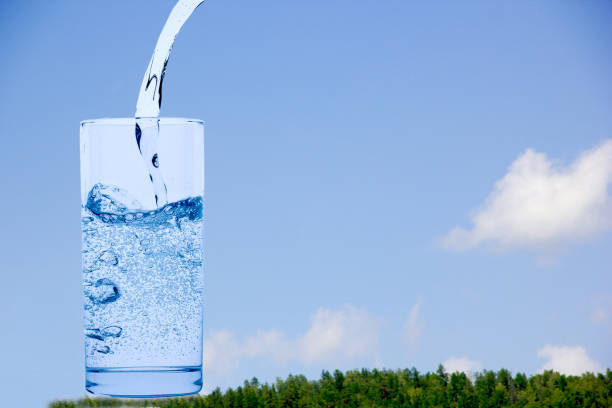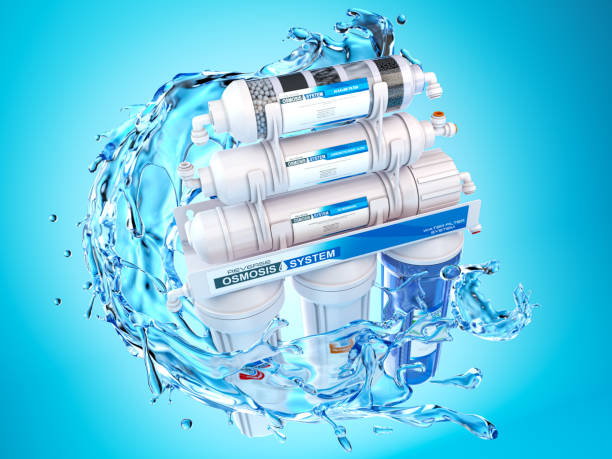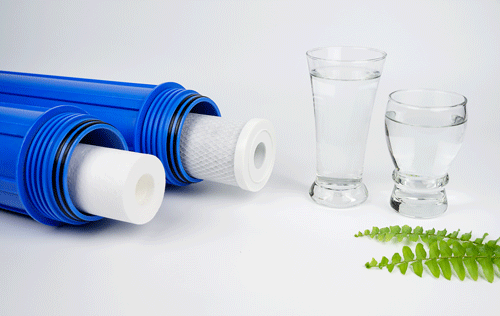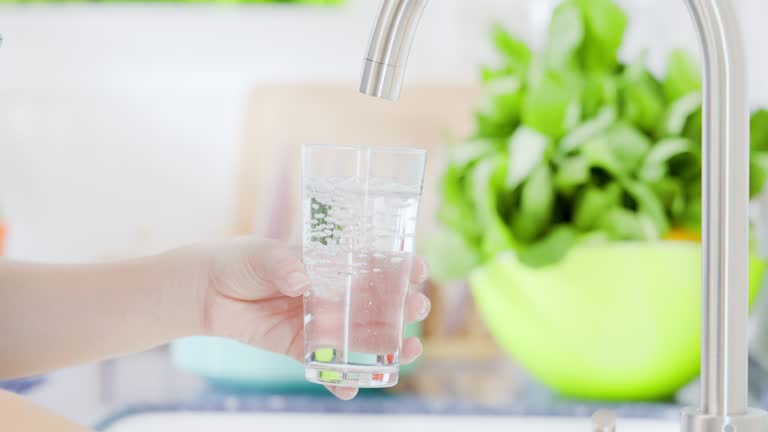In recent years, as the public's requirements for water quality have become higher and higher, various water purification products have also flooded into the market. The various filtering technologies and materials make users dizzy when choosing. I don't know when, the word "RO reverse osmosis" is always repeatedly emphasized by merchants and placed on the homepage of product introduction as a core selling point. Today, Susan will tell you what RO reverse osmosis is? Why should we choose RO reverse osmosis?
 What are the filter elements of water purifiers?
What are the filter elements of water purifiers?
Before understanding RO reverse osmosis, let's first understand the filter elements in most current water purification products: a water purification machine has no more than several filter elements:
PP cotton, activated carbon, ultrafiltration membrane, RO membrane, and these filter elements are mostly in different orders in different machines.

PP cotton filter element is often placed in the first stage of filtration. It is basically found in all water purifiers. Its main function is to filter out large particles of impurities in tap water first; activated carbon is a lot of black granular carbon, which has the functions of adsorption, decontamination, decolorization, filtration and purification.

It has super strong adsorption capacity and some people even use it in the refrigerator to absorb odors; the filtration accuracy of ultrafiltration membrane filter element is 0.01μm, which can filter out some macromolecular pollutants such as colloids, bacteria, algae, etc., but cannot filter metal ions.

The RO membrane we are talking about today has even smaller pores, so small that it is invisible to the naked eye. The pore size of 0.1nm can block basically all impurities and heavy metals, so that it can obtain pure H2O. The size of this pore size is about one millionth of a hair.
What is RO reverse osmosis?
Reverse osmosis is a new membrane separation technology developed in the 1960s. It is a process of separating the solvent and solute in the solution under pressure by relying on a reverse osmosis membrane. The full English name of reverse osmosis is "REVERSEOSMOSIS", abbreviated as "RO".
How does it work?

Generally, water flows from low concentration to high concentration. Once water is pressurized, it will flow from high concentration to low concentration, forming reverse osmosis.

The pore size of RO reverse osmosis membrane is as small as nanometer level. Under a certain pressure, water molecules can pass through the RO membrane, while inorganic salts, heavy metal ions, organic matter, colloids, bacteria, viruses and other impurities in the source water cannot pass through the RO membrane, so that the pure water that can pass through and the concentrated water that cannot pass through are strictly distinguished.
 Why does wastewater exist?
Why does wastewater exist?
I believe that users who have a certain understanding of RO reverse osmosis must have heard of the term wastewater rate.
The so-called wastewater is because it is not easy for water molecules to pass through the RO membrane. It needs to be pressurized to pass through. In order to protect the RO membrane, the pressure cannot be too high. Some manufacturers set the pressure so that only about 20% of water molecules can pass through the RO membrane. Water that cannot pass through the RO membrane is wastewater.

The so-called 4:1 wastewater rate means that after filtering a box of water, four cups of pure water and one cup of wastewater are obtained. Generally, wastewater contains a lot of impurities and is no longer suitable for drinking. It can be used for mopping and watering flowers.
Why should choose RO?
Through the above explanation, I believe everyone has realized that RO filter element has the best purification effect among all the filter elements on the market. It can effectively remove calcium, magnesium, bacteria, organic matter, inorganic matter, metal ions and radioactive substances in the water, and the purified water is crystal clear and sweet. Many people will also have doubts: purified water is too pure, will drinking too much be harmful to the human body? Little do people know that 95% of the nutrients needed by the human body are ingested from food, and the nutrients ingested by drinking water are insignificant in comparison.
Therefore, choosing RO reverse osmosis is actually choosing a peace of mind.

Susan hopes the above content can provide more valuable reference information for you to choose and use water purifier filter and water purifier system. If you want to know other related knowledge about water purifier, you can contact me, we are happy to answer you.











 How to choose a filtered water purifier: help you buy the best water purifier! Keep your water as pure as it can be!
How to choose a filtered water purifier: help you buy the best water purifier! Keep your water as pure as it can be!
 Analysis and solutions to the causes of reverse osmosis membrane fouling
Analysis and solutions to the causes of reverse osmosis membrane fouling
 Do you know how to extend the life of your reverse osmosis membrane?
Do you know how to extend the life of your reverse osmosis membrane?
 How much do you know about ultrafiltration technology and ultrafiltration membranes?? Ultrafiltration Knowledge Points Collection, you deserve it!
How much do you know about ultrafiltration technology and ultrafiltration membranes?? Ultrafiltration Knowledge Points Collection, you deserve it!